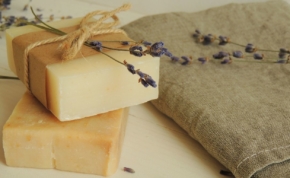The soap making process
Whether it is handmade, organic or industrial, soap is always the result of a chemical process called saponification. Said to be cold or hot, this process which consists in mixing soda with a fatty substance produces glycerin and soap. If the craftsmen soapmakers plebiscite the cold saponification, the industrialists prefer the hot saponification.
Hot saponification
The soap paste resulting from the mixture of soda and fat is heated up to 120°C in tanks until it turns into soap. The advantage of this method? It shortens the duration of the chemical reaction. It also allows them to incorporate other ingredients and synthetic products into the mixture. In order for the soap to harden quickly, many manufacturers remove the glycerin from the final composition. The result is a soap that leaves your skin dry.
Cold saponification
Cold saponification is not so different from hot saponification, except that the mixture heats up by itself. However, you have to give it time to heat up. Before the soap solidifies, the soap maker adds essential oil or precious oil, then divides it into small portions in molds. A minimum of 48 hours of rest is observed before demolding. Then comes what is called the cure. For about 40 days, the soaps are left to dry until they harden completely. Cold saponification takes a long time, but it allows the soap to keep its natural film on the skin.
Make your own soap, the big trend of the moment!
Even if saponification implies that it is necessary to respect a precise dosage and that soda is a very corrosive component, many individuals do not hesitate to make their own soaps. It is the great fashion of these last 5 years. Some of these individuals have even discovered a vocation for creating soaps, that they have made it their profession.

Leave a Reply